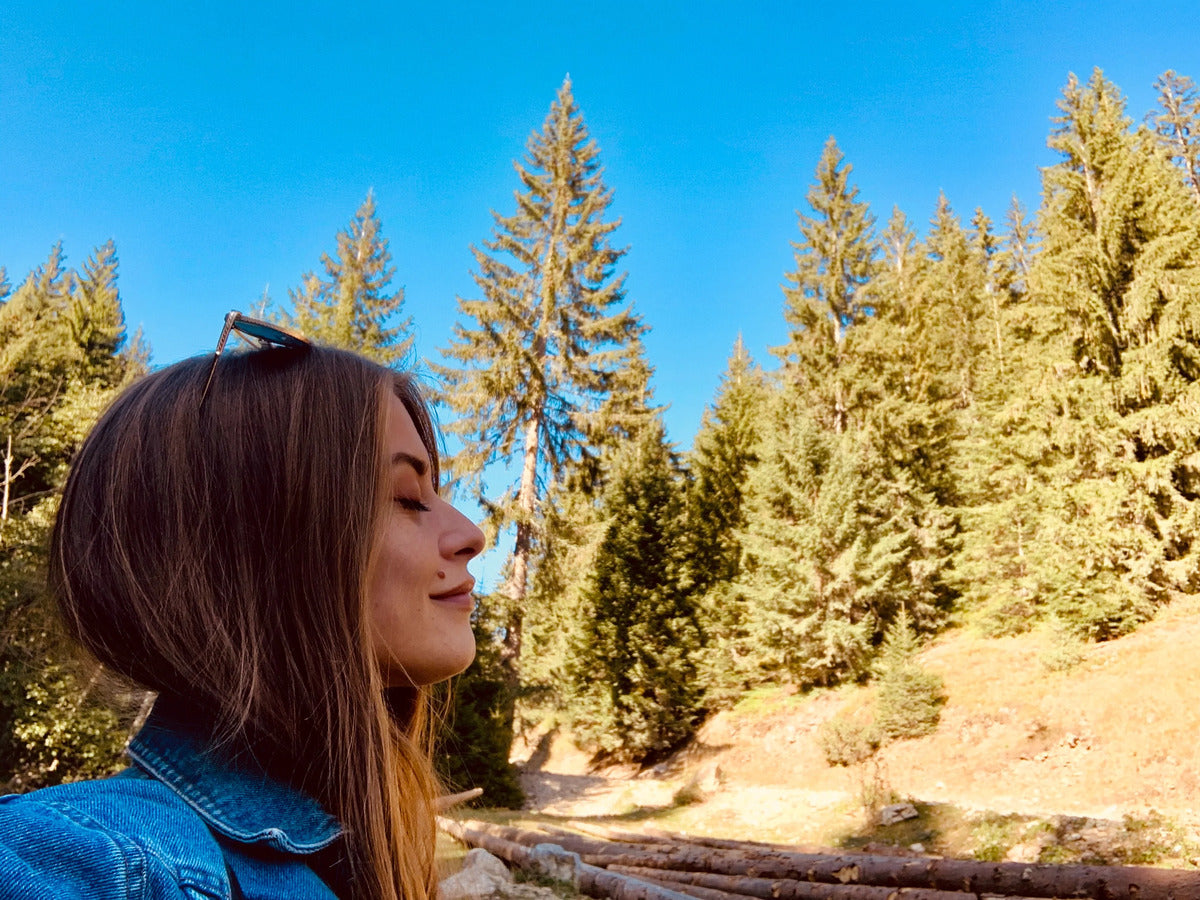
Breathwork & The Nervous System: Vital Insights
Most of us take the automated action of breathing for granted. We do it every day without thinking, and it keeps us alive and thriving. But did you know that bringing awareness to your breathing patterns can significantly impact your nervous system?
In this post, we'll delve into the fascinating world of breathwork and explore its profound connection to the nervous system. Discover how conscious breathing techniques can transform your well-being, reduce stress, bring inner peace, and even improve physical symptoms.
Along the way, I'll share some of my favorite breathing exercises. So, let's take a deep breath and embark on this transformative journey!
Understanding Breathwork
Breathwork, also known as conscious or intentional breathing, is a powerful practice that focuses on observing and controlling your breath. It is a holistic approach to self-care that dates back centuries, with roots in ancient traditions such as yoga and meditation and is now backed by and proven by modern science.
The essence of breathwork lies in the idea that by manipulating our breath, we can directly influence our mental, emotional, and physical well-being. Your breath quickens or slows depending on how you perceive your environment.
For example, if you are excited or nervous, you may begin to breathe more shallowly and quickly, whereas if you are relaxed (like when you're in a deep sleep), your breathing becomes slow and deep.
The Nervous System Connection
To comprehend the profound impact of breathwork on our nervous system, it's crucial to understand the two primary branches of this intricate system: the sympathetic and parasympathetic nervous systems.
The sympathetic nervous system is related to the body's stress response, what we refer to as the fight-or-flight mode. When activated, it triggers an array of physiological changes like increased heart rate, elevated blood pressure, and heightened alertness.
The parasympathetic nervous system promotes relaxation, rest, and restoration. It is often called the rest-and-digest or calm-and-connect system. As the parasympathetic nervous system is activated, our body can heal, recharge, and rejuvenate.
Just as your environment and actions affect your breath, consciously changing your breathing pattern can tell your body that you are safe to enter that rest-and-digest state.
Breathwork acts as a bridge between these two systems, enabling us to consciously shift from a stressed state to a relaxed one. By modulating our breath, we can activate the parasympathetic nervous system, reducing stress, anxiety, and the various health issues associated with chronic stress.
Powerful Breathing Exercises
Now, let's explore some of my go-to breathing exercises. These techniques have been carefully curated to help you harness the transformative power of breathwork:
1. 2:1 Breathing
Take two quick inhales, then exhale for twice as long. Continue to repeat this until you feel a sense of inner peace and calm.
2. 5:5 Breathing
This is ideal if you’re suddenly feeling anxious. Inhale through nose for five seconds, then back out through pursed lips for five seconds more.
3. 7:7 Breathing
Quickly inhale seven times. You’ll feel your belly move with you as you do it. Then, slowly exhale those breaths from your nose for seven seconds.
You can incorporate these exercises into your daily life. You can do them anytime, anywhere, to reset your parasympathetic nervous system and return to that rest-and-digest state.
Other popular breathing exercises include:
Diaphragmatic Breathing
Start in a comfortable position, perhaps sitting or lying down. Place one hand resting your heart and the other on your belly. Breathe deeply through your nose, feeling your belly rise as you fill your lungs with air. Exhale slowly through your mouth, allowing your abdomen to sink. Repeat this cycle for several minutes, focusing on the sensation of your breath.
Box Breathing
Imagine tracing the outline of a square. Inhale deeply for four seconds, hold your breath for a count of four, exhale for four seconds, and hold your breath again for four seconds. Continue for several rounds, maintaining a steady and relaxed pace.
Alternate Nostril Breathing
While sitting, use your right thumb to close your right nostril. Inhale deeply with your left nostril, then close it with your ring finger. Open your right nostril and exhale slowly. Inhale through your right nostril, close it, and exhale through your left nostril. Continue this pattern for several cycles, experiencing the balancing effect of this technique.
The Transformative Power of Breathwork
Incorporating breathwork into your daily routine can yield incredible benefits. Regular practice can help reduce anxiety, improve sleep quality, enhance focus, and boost overall mental and physical well-being.
It will also give your body permission to rest-and-digest with the goal of prevention and healing of chronic symptoms.
While you develop a deeper awareness of your breath, you cultivate a powerful tool that can be accessed anytime, anywhere.
Breathwork is a transformative practice that holds the key to unlocking the potential of your nervous system. By intentionally harnessing the power of your breath, you can steer your body and mind toward balance, harmony, and resilience. Check in with your breathing patterns a few times every day, and take a moment to practice these exercises to connect with your breath and embrace the transformative potential that lies within you!
Each of our courses at Vital Side incorporates breathwork, a small yet essential tool for nervous system healing. If you experience chronic symptoms, start with our signature course REWIRE. If you’re not experiencing physical symptoms yet, but feel like you’re on the way to burnout, check out our new course, REBOOT. And if you just want a taste of how powerful these techniques can be, start with our 7-day brain retraining course, RESET.
For more inspiring content on wellness, vitality, and breathwork, be sure to follow @myvitalside on Instagram and check out the podcast!

